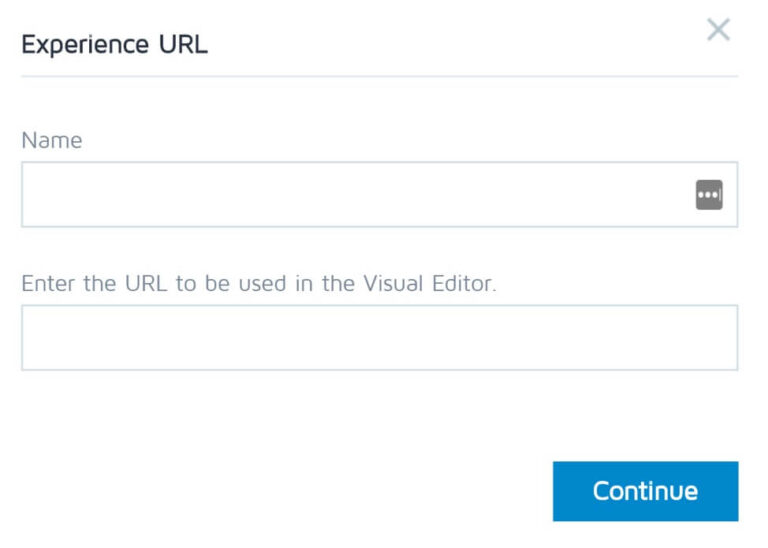Ulta Beauty does this with great success. Even though the company has two messages—“All Things Beauty. All In One Place” and “Welcome To The Fun Side Of Beauty”—they both revolve around one thing. Ulta doesn’t try to appeal to anyone who doesn’t love beauty and having fun with beauty products. They don’t try to incorporate home goods or any other topics into their messaging; it’s all beauty all the time.
As you can see, a fair bit of work goes into developing a brand personality and message worth taking notice of and remembering. For that investment of time, energy, and resources to pay off, consistency is vital. Once you decide on personality traits, take on a certain voice and tone, and choose a message, don’t stray from it (unless, of course, A/B tests or the direction of your company dictate change).
- Retaining more loyal customers and turning them into brand advocates.
- Bringing in a steady stream of new customers.
- Building credibility and authority within your industry, which fuels more of the above.
Take this as a lesson. A dialed-in message that appeals to the core values, needs, and wants of your audience will always perform better than an unfocused and inconsistent one.
4 ways to develop your brand personality
For example, let’s say that you sell makeup to women in their 20s. When asked, your family and friends described you as a bright ray of sunshine in their lives. Given that feedback, it would make sense to adopt a positive, uplifting brand personality and voice. This is just one example of how feedback from others can be applied to help you develop cohesive branding.
1. Decide who you are FIRST
So don’t develop your branding blindly or based on assumptions about your target market. Speak to current and potential customers often, observe them, and do your research to find out how they perceive your brand in comparison to competitors. Then, weave what you learn into your brand personality.
What’s important to you? What motivates you to do what you do every day? What rules do you and your team live by? All of these questions tie back to a main ingredient of every solid brand—core values.
2. Enlist the help of family & friends
Consider four crucial steps in the process of defining your brand personality.
To help you build trust with your audience and increase brand awareness by staying “on brand” at all times, why not create a brand guide? By having your guidelines in writing, you and your team can stay on the same page and enjoy the many benefits that consistent, thoughtful branding can bring!
As with developing your brand personality, you’ll want to consider your potential customers when crafting your message. But it’s also essential to make sure it’s a match for what you’re offering, whether you sell products or services or both.
3. Get to know your audience
Ask your family and friends to describe you as an individual and entrepreneur (not your brand). You should end up with a decent list of characteristics and traits, especially after doing your own brainstorming too. You can then analyze the list to see how your characteristics do carry over into your business and how they could carry over into your branding.
Many brands decide who they are AFTER launch and tailor their messaging as things shake out. That’s a waste of time, money, and resources. Instead of playing catch up, streamline things from the start.
4. Nail down your brand voice
Outside perspectives can be extremely helpful when trying to gain clarity on what your brand personality should be. And who better to shed light on who you are and what you’re all about than the people who know you best?
An important part of brand personality, voice can make or break your efforts. How you choose to communicate determines whether or not you can successfully breathe life into the traits and characteristics you define as part of your brand personality. You’ve got to get it right.
Now that we know what strong brand messaging looks like and why it’s important, let’s dive into how to create it.
4 keys to crafting strong brand messaging
Walmart is another noteworthy example of this. Since its core message centers on saving money, it’s no surprise that words like “discount”, “rollback”, and “clearance” are a common staple across the company’s content. And that’s not to mention calls to action such as “be the first to save!” and “start with everyday low prices.”
1. Let your core values lead the way
As much as your brand personality has to do with who you are, it also relates to who your audience is. Your branding could be a perfect reflection of what your business is all about. But if it doesn’t resonate with your audience, what does it matter?
Besides the major brands we’ve discussed, there may be others—in or outside of your industry, large or small—whose messaging resonates with you. Think about why. Learn from what those brands are doing and use the inspiration as creative and strategic fuel for your efforts.
2. Consider your offerings and audience
Be sure that your message is aligned with what you offer and to who.
So ask yourself: What message(s) will get my main point across to the majority of my audience in the most straightforward way? Once you have an answer, leave it at that.
Just as every person has a personality, so does every brand. And just as an individual’s personality affects how others view and interact with them, your brand’s personality impacts how people view and interact with your business. It can make the difference between struggling to get by and:
3. Get inspiration from successful companies
So, of course, you don’t want to leave the development of your brand personality to chance. If you want the benefits of having a brand, you have to go after them strategically. How?
4. Don’t overthink it and don’t overdo it
Determine what yours are, figure out which ones you have in common with your audience, and use those as the foundation for your brand messaging. Tie everything back to them and you will attract more of the right people to your business (who’ll then tell other like-minded people about you).
Take, for example, Nike’s “Just Do It” slogan. It matches Nike’s workout products because it centers on taking action. It also matches the audience (fitness enthusiasts) because it encourages being bold and forging ahead, which they value.
Choose your core values and the drivers behind your work BEFORE ever coming to market. Highlight your priorities, specialties, and your emotional appeal. If these are the foundation for your brand identity, the rest will fall into place much easier. Why? Because, in selling your unique brand, you’ll stand out from others who are simply selling non-distinct products and services.
To enjoy the benefits of strategic branding…
It’s easy to get overwhelmed thinking about how to appeal to absolutely every potential customer you might come in contact with. But fretting over that is a surefire way to alienate and confuse your audience, which would only push you away from your business goals. Be resolved to keep your brand messaging as simple as possible.
Come for the monetary gain; stay for the endless other benefits. That’s how the story goes for many businesses that commit to developing authentic, attractive, and memorable brands. As a result of intentional brand-building, they enjoy gains that range from boosted engagement to increased influence and the ability to reel in other brands that gladly pay to share their spotlight. For them, it’s the key to real prosperity in business. It can be the same for you.






